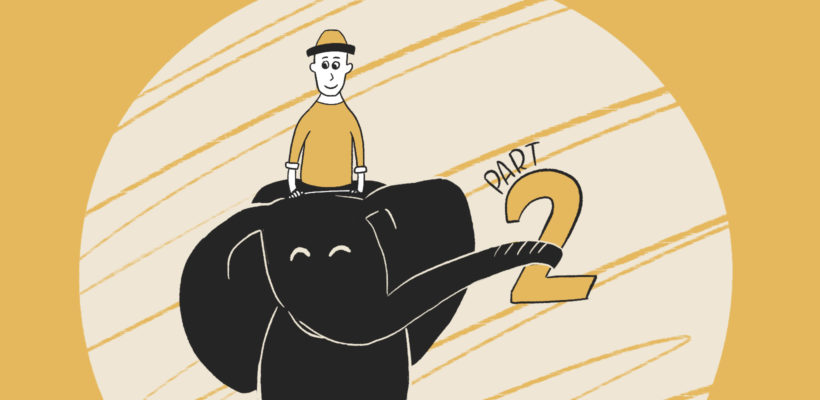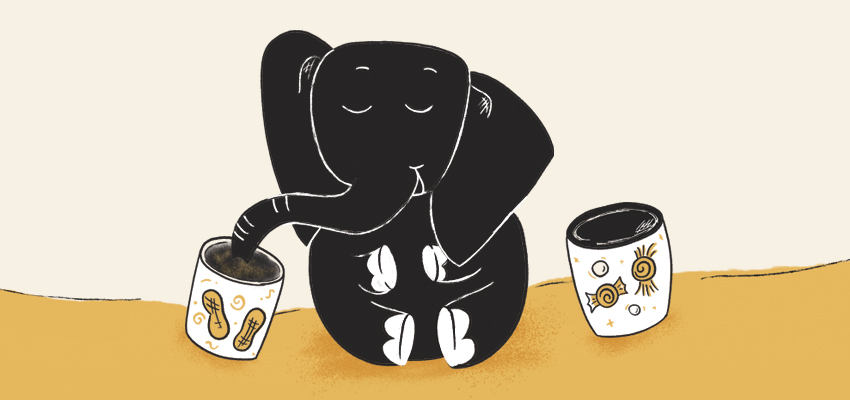
Red Chalk Studios presents our series on buyer, or customer, psychology — what it is, why it matters, and how understanding it can make a powerful difference in your business every day. If you haven’t read it yet, back up and start with:
We are on the hunt for your customer’s “elephant,” or that strong, silent, emotional voice that, according to customer or buyer psychology, makes the final decisions. While the logical “rider” who’s officially guiding the elephant believes he or she is directing the elephant, it’s really the strong pachyderm who is calling the shots and choosing the path to take.
One place to look for proof of the elephant is in Darwinian psychology.
Yep, we’re going back in time. The part of Darwin’s theory that applies here is that only the best adapted creatures survived; anything that was not able to adapt in one way or the other kicked the bucket or did not reproduce, and thus made the species stronger as a whole by exiting the gene pool.
What does adaptation look like?
When we were out roaming the ancient savanna, if we ate something and it didn’t kill us, then we would probably eat whatever that was again. The more adventurous eaters didn’t always have good luck and, over time, left the gene pool. Habit and familiarity is an ancient, “elephant” emotion, and something we as humans (otherwise known as customers) respond to on a deep level.
This is an important factor in customer retention.
One good customer experience can and often will lead to future business. The opposite is also true; it only takes one poor experience to chase off the elephant (and the customer) for good.
Another “elephant” emotion: Avoiding loss.
If an ancient human were hungry and had access to a cherry tree, he or she would have weighed the gains vs. the potential losses between picking and eating the easy, low-hanging but smaller cherries, or climbing the tree for the higher but plumper and juicier cherries.
The gain would be the better cherries, the loss would be falling to death. (Ancient cherry trees were HUGE. Like mighty oaks. 😉 The result? Our risk-taking humans tended to exit the gene pool pretty quickly.
A great real-world example of practicing loss avoidance is to consider your favorite restaurant chain, be it Cracker Barrel, PF Chang’s or Tropical Smoothie…

There is a reason it’s your favorite. You can count on getting the same food (familiarity) prepared the same way, in pretty much the same amount of time, no matter the location or time of day (low variances). And if you’ve never gotten food poisoning there before, it’s pretty safe to assume you’re not going to get it the next time you pay them a visit.
But when faced with the decision to try a different restaurant — perhaps one with good reviews and that looks inviting — the elephant within is weighing the odds that there will be a selection of choices you’re enthusiastic about and they will be delicious against the chance you might have a bad experience or walk away wanting a food do-over.
Which do you think wins out more often, the elephant or the rider? Insert elephant trumpet here.
So how can we, as businesses, reach the elephant knowing these concepts?
Remember that providing familiarity and reducing variance are important.
If you’re interested in attracting returning customers (and who isn’t?), focus on offering them a strong, comfortable, consistent experience from start to finish. Every. Single. Time.
By understanding how our minds and decision-making processes work, and by appealing to the “elephant,” that emotional, gut feeling within, you can better serve your customer base.
Up next in our Understanding Customer Psychology series: Oh, How Elephants Hate Losing Things.


